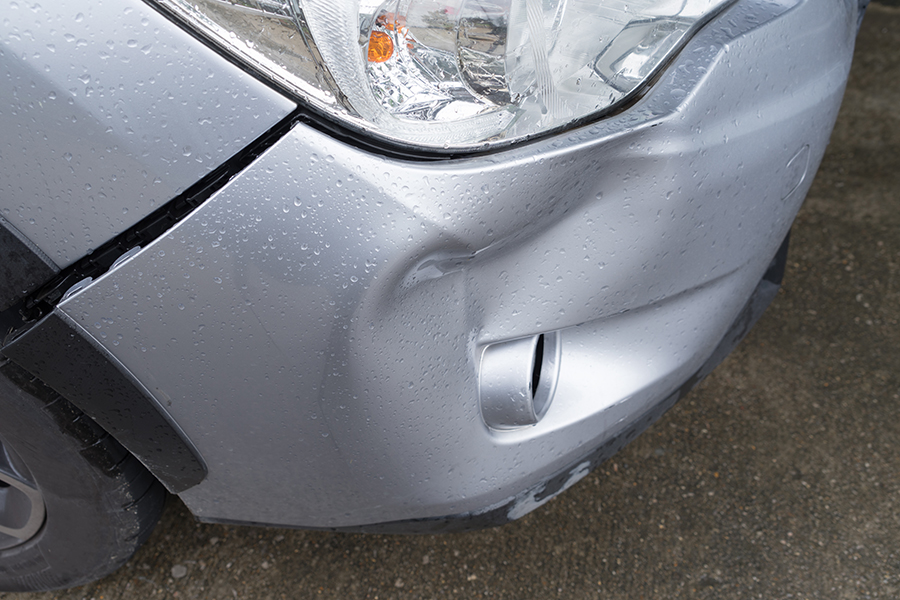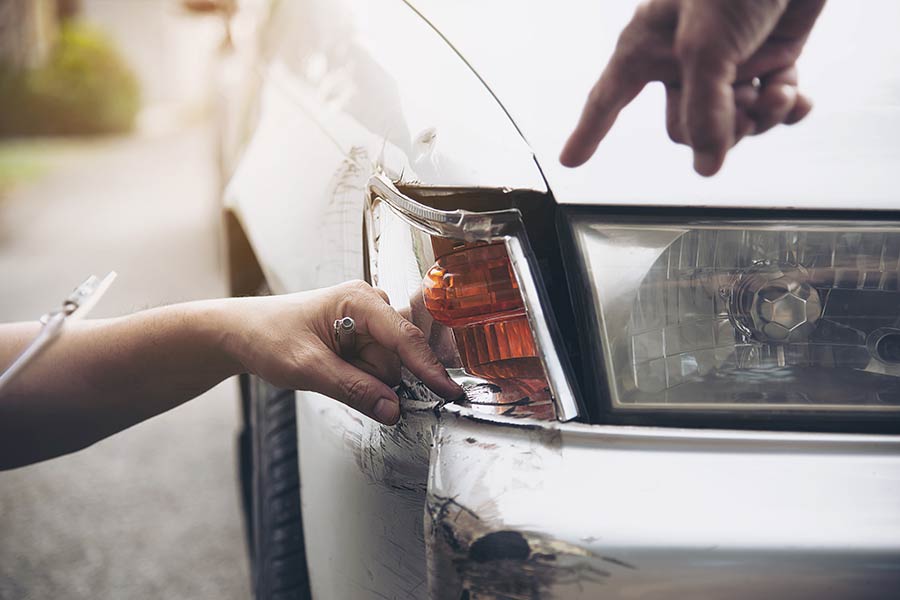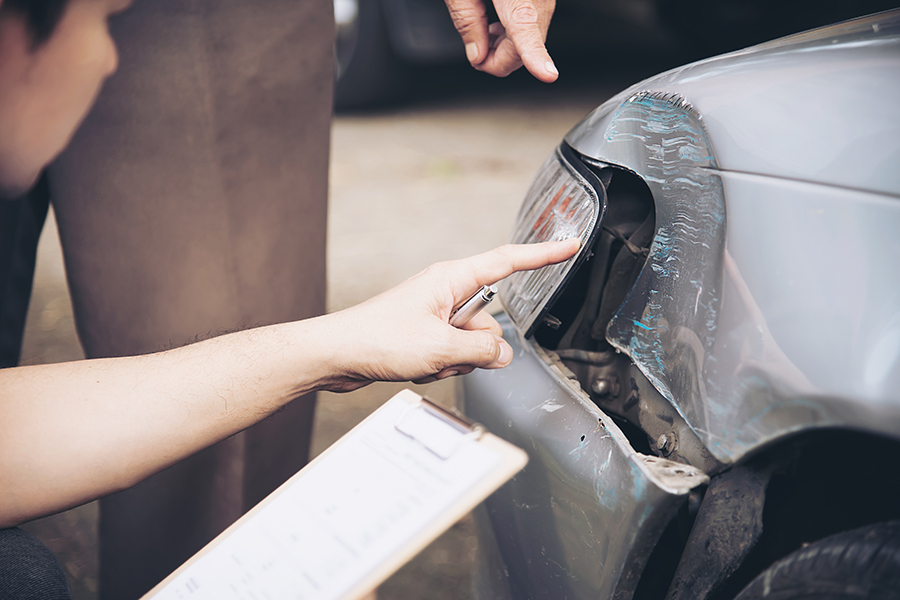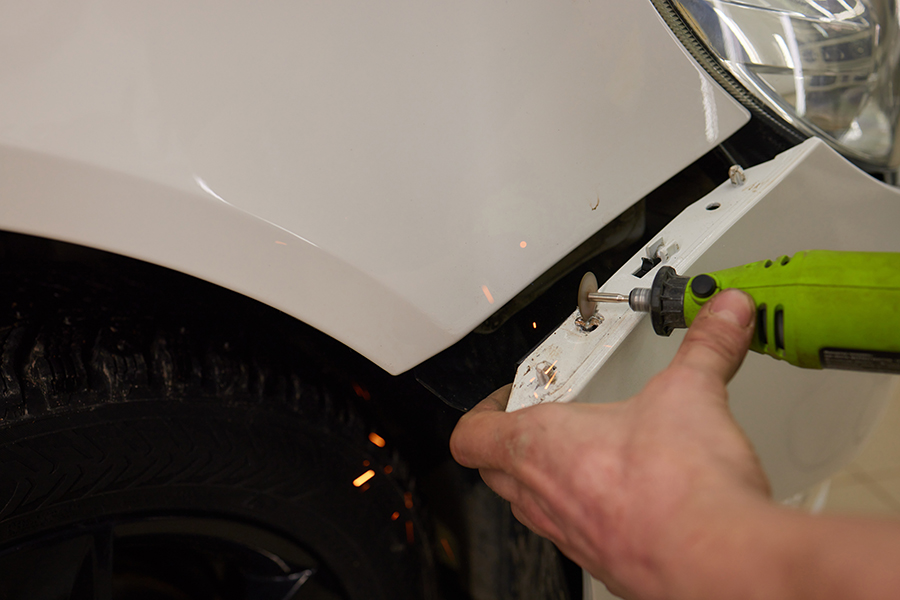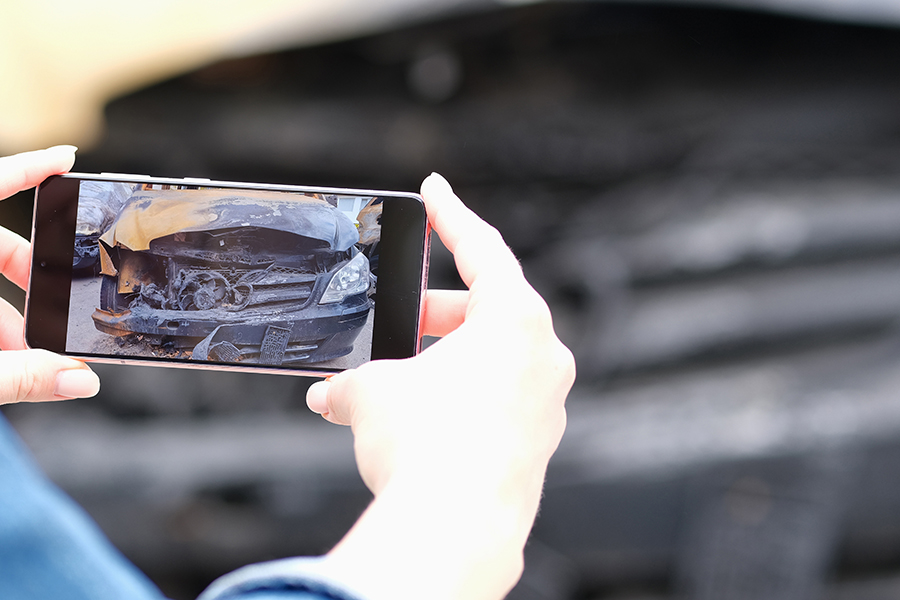Ever had a close encounter with a shopping cart or a tight parking spot that left your car with an unsightly bumper dent? You're not alone. Bumper dent repair doesn't have to be a headache or drain your wallet. In this post, we'll dive into the nuts and bolts of fixing those pesky dents, ensuring your ride looks as good as new without breaking the bank. From DIY tricks that you can tackle in your garage to knowing when to call in the pros for a sleek, seamless fix, we've got you covered. Let's get straight to the point and explore how you can turn back time on your bumper's battle scars.
Key Takeaways
- Bumper dents can often be fixed with paintless dent repair (PDR), a method that's quick and cost-effective.
- Choosing professional repair ensures your car's bumper is restored to its original condition, maintaining the vehicle's value.
- DIY repair might seem cheaper but can lead to more damage if not done correctly. It's best for minor fixes only.
- The cost of fixing a bumper dent varies, but investing in a professional service can save money in the long run by avoiding further damage.
- When selecting a repair service, look for experienced technicians who specialize in bumper repairs to ensure quality work.
- Regular maintenance and prompt repair of bumper dents help keep your car looking new and can prevent more serious damage.
Understanding Bumper Dents
Common Causes
Bumper dents happen often. They can come from minor collisions. Think about two cars lightly bumping in traffic. Parking lot accidents are common too. Cars sometimes hit each other when trying to park.
Environmental factors also cause dents. Hailstorms drop ice that can dent bumpers. Falling debris, like tree branches, does the same.
Human errors play a big part. Shopping carts often roll into cars, leaving dents. Door dings are when car doors hit another car's bumper.
Types of Dents
There are different kinds of dents on bumpers. Shallow dents come from light hits. These don't look deep but still need fixing.
Deep dents are worse. They come from harder impacts, like fast driving accidents. These dents are harder to fix.
Creased dents have sharp lines. They happen when something hits the bumper very hard. This type needs a lot of work to repair.
Impact on Vehicle
Dents can lower a car's value. People pay less for cars with visible damage. This is important for those wanting to sell their cars.
If the paint cracks, rust might form. Rust can spread and harm more than just the bumper.
The car's look suffers too. Dents make a car look old and not cared for. This affects how others see the car and its owner.
Benefits of Professional Repair
Cost Efficiency
Choosing professional repair for bumper dents can save money in the long run. Repair costs are often much lower than the expense of replacing a whole bumper. Minor dent repairs are especially affordable. They keep your wallet happy while fixing the problem.
Over time, small dents can lead to bigger issues if not addressed. These issues might cost a lot more to fix. By getting dents repaired quickly, you prevent further damage. This approach saves money over time. It's a smart choice for your car and your budget.
Time Saving
Professional services offer quick fixes for minor dents. Many shops can turn around minor repairs fast. This means you won't be without your car for long.
Some places even offer same-day service. This is super convenient for busy people. You drop off your car and pick it up good as new on the same day. Compared to major repairs, this saves a lot of time. Your daily routine barely gets interrupted.
Quality Assurance
When you choose a pro for your bumper dent repair, you get peace of mind. Experts know how to fix dents the right way. They use the best materials and techniques. This ensures your car looks great after the repair.
Many shops also offer warranties or guarantees on their work. If something isn't right, they'll fix it at no extra cost to you. This commitment to quality is a big reason why professional repair is worth it.
PDR for Bumper Dents
What is PDR
Paintless Dent Repair (PDR) is a crafty method to fix dents. It does not harm the paint on your car. Experts use special tools to push the dent back out from behind. You can use PDR on many parts of a car, not just bumpers.
It works well for small and medium dents. The paint stays untouched. This makes PDR popular for fixing cars without ruining their look.
PDR Process
The first step in PDR is looking at the dent closely. Professionals decide how to fix it best. They plan their approach carefully.
Next, they use special tools to gently push the dent back into place. These tools are designed not to harm your car's paint. It takes skill and patience.
After the dent is gone, they check the area. They make sure everything looks good as new. This final step ensures quality work.
Advantages of PDR
PDR saves money when compared to traditional repair methods. It's cost-effective because it's quicker and doesn't need paint or fillers.
This method keeps your car's original paint. This is important for keeping your car's value high.
Repairs are fast with PDR. It's less invasive than other methods, needing less time in the shop. This means you get your car back sooner.
Plastic Bumper Repair
Repair Techniques
For minor dents, suction-based methods work well. They use a tool that sticks to the bumper. Then, it pulls the dent out. This method is quick and does not harm the paint.
Another way to fix dents is using hammer and dolly techniques. This is for metal parts. It involves pushing and tapping the dent from behind. It helps bring the shape back. Sometimes, it's used with the suction method for better results.
For deeper dents, filler and paint methods are common. First, a special putty fills the dent. After it dries, it gets sanded down to be smooth. Then, matching paint goes over it. This makes your bumper look new again.
Materials Used
Many materials help fix bumpers. Metal rods and body fillers are basic ones. Metal rods push dents out from behind. Body fillers cover any holes or deep spots.
Specialized tools like dent pullers and heat guns are also used. Dent pullers help in the suction method. Heat guns make plastic bumpers soft. This makes them easier to reshape.
High-quality automotive paints are important too. They make sure the repair blends in with your car's color. This paint lasts long and looks good as new.
When to Replace
Sometimes, a bumper needs replacing, not just fixing. If the damage is too big or deep, repair might not work well. It could make your car unsafe.
Structural integrity concerns are serious. If a crash damaged your bumper's structure, it's safer to replace it. This keeps you safe if there's another accident.
Lastly, think about cost-benefit analysis. Sometimes, fixing a badly damaged bumper costs more than getting a new one. If repairs are too expensive or won't last, replacement is better.
Rear Bumper Dent Repair
Specific Challenges
Fixing a dent in the rear bumper comes with its own set of hurdles. One major issue is accessing certain areas of the bumper. Some spots are hard to reach, making the repair work tricky.
Matching the paint colors precisely can also pose a challenge. It's vital for the car to look as good as new. Yet, finding the exact shade sometimes proves difficult.
Plastic and metal bumpers react differently to impacts and repairs. Plastic bumpers, discussed earlier, require specific techniques. Metal bumpers, though less common now, present their unique challenges. They might need more forceful handling or different tools for reshaping.
Repair Steps
The first step in repairing a rear bumper dent is cleaning the area well. This ensures no dirt or debris interferes with the repair process. Next, it's crucial to assess the damage carefully. This helps in planning out the repair strategy effectively.
The actual dent removal process varies based on the bumper material. For plastic, it often involves heating and pushing out the dent from behind. For metal, tools might be used to pull the dent out.
After removing the dent, sanding, painting, and polishing are essential final steps. These help in blending the repair with the rest of the bumper. They ensure that once finished, the bumper looks seamless and undamaged.
Preventing Future Dents
To avoid future dents, parking in less crowded areas is wise. This reduces the chances of someone accidentally hitting your car.
Using car covers or protective barriers can also shield your vehicle from minor bumps and scratches. They act as a cushion, absorbing any potential impact.
Adopting careful driving and parking habits is another effective measure. Being mindful of your surroundings can prevent many accidents before they happen.
DIY vs Professional Repair
Pros and Cons
DIY bumper dent repair can save money. It also fixes the problem fast. But, it has limits. Severe damage might not get fixed right. Compared to a shop, DIY might lack in quality.
Professional repair costs more. Yet, they handle big dents better. Their work often lasts longer too.
Tools Needed
For DIY, you need certain tools. Dent pullers and heat guns are must-haves. These tools make the job possible.
e tools are not required but helpful. Glue pulling kits are one example. They can make the work easier.
Having a good place to work is key. A well-set space makes fixing dents smoother.
When to Seek Help
e dents are too tough for DIY fixes. Deep or complex ones need a pro's touch. Not having the right tools is another sign to get help.
It's important to know when a dent might hurt your car's structure. A professional can tell if there's serious damage.
Cost of Bumper Dent Repair
Factors Affecting Cost
The cost to fix a dent in your bumper can change a lot. It depends on how big and deep the dent is. Small dents are cheaper to repair. Big or deep ones cost more.
Where the dent is on your car also matters. Some spots are harder to reach. This makes the repair cost go up.
The material of your bumper plays a big role too. Plastic bumpers are often cheaper to fix than metal ones. Different materials need different repair methods. This affects the price.
Average Prices
For small dents, you might pay between $50 and $150. This is just a basic range. The actual cost can be higher based on who fixes it for you.
e places charge more because they have special skills or tools. It's important to know this when comparing prices.
If your bumper needs new paint, it could cost extra. Matching the paint perfectly isn't easy. It requires skill and time, which adds to the bill.
Getting Estimates
It's smart to ask several repair shops for quotes. This way, you can compare prices and services. Make sure each quote includes everything that will be done to your car.
Detailed estimates help avoid surprises later. They should list all costs clearly.
Some shops offer online tools for estimates. These can be very handy. They give you a quick idea of what the repair might cost before you visit.
Choosing a Repair Service
What to Look For
When your bumper gets dented, finding the right repair service is crucial. Look for certifications first. These show the shop knows what they're doing. Experience matters too. Shops with years under their belt often do better work.
Customer reviews can tell you a lot. Good words from others mean a lot. They show the shop does good work and treats people right. Also, check if they offer warranties or guarantees. This shows they stand by their work.
Questions to Ask
Before choosing a service, ask some questions. Find out what repair methods they use. Some methods are better than others for certain types of dents. Also, ask what materials they'll use on your car.
Knowing how long the repair will take is important. You need your car back fast. But good work takes time. Be wary of shops that promise too quick fixes.
Always ask about warranties or guarantees on their work. This protects you if something isn't right after the repair.
Customer Reviews
Reading online reviews is a must. Look for shops with lots of good feedback. But not just any feedback. Look for comments from people who had similar bumper issues fixed.
Consistent positive feedback is a good sign. It means the shop does good work often. Reviews that mention similar repair needs are especially helpful. They show the shop can handle your specific problem well.
Maintaining Your Bumper
Regular Inspections
It's wise to check your bumper often. Look for new dents or damage every month. This helps you catch problems early. Early detection means easier repairs. It keeps your car looking good too. A nice-looking vehicle feels great to drive. Plus, it might get you a better price if you sell it.
Keeping an eye on your bumper saves you trouble later. Small dents can become big issues if ignored. So, always stay alert to changes in your car's appearance.
Protective Measures
You can protect your bumper in several ways. Using bumper guards or protectors is smart. They shield your car from minor bumps. Also, try to park in safe spots away from heavy traffic. This reduces the risk of someone hitting your car.
Another tip is to apply protective coatings regularly. These coatings add a layer of defense against scratches and small dents. They keep your bumper looking newer for longer. Plus, they make future cleans easier.
Taking these steps helps avoid damage in the first place. It's about being proactive with your car's care.
Quick Fixes
etimes, you might find a small dent that you can fix at home. Pouring boiling water over the dent can make the plastic more flexible. Then, you can push the dent out from behind.
A plunger isn't just for sinks; it can work on minor dents too. Just press it against the dent and pull back. Often, this pops the dent right out.
These are temporary fixes until you can get professional help. Remember, choosing a good repair service is crucial for serious damage.
Summary
Bumper dents are a pain, but fixing them doesn't have to be. We've walked you through everything from understanding the nitty-gritty of bumper dents, choosing between DIY and professional repair, to how you can keep your bumper looking fresh after it's fixed. Whether it's a minor scratch or a major dent, knowing your options can save you time and money. And let's face it, a smooth, dent-free bumper not only looks good but also keeps your car's value in check.
What's next? Take action! Find a trusted repair service or, if you're feeling brave, give that DIY repair a shot. Remember, keeping your ride in top shape isn't just about pride; it's about making smart choices for your car's longevity. Let's get those bumpers back to their former glory and keep our rides looking sharp!
Frequently Asked Questions
Can I fix a bumper dent myself?
Yes, you can tackle some minor bumper dents at home using DIY methods like heat application or plunger techniques. However, the success greatly depends on the dent's size and your comfort with DIY tasks.
How much does professional bumper dent repair cost?
The cost varies widely based on the dent's severity and location but expect anything from $50 to over $600 for professional repairs. It's best to get a few quotes to find the best deal.
What is PDR, and can it be used on bumper dents?
PDR, or Paintless Dent Removal, is a technique used by professionals to fix dents without needing to repaint your bumper. It's effective for small to medium-sized dents, as long as the paint surface is intact.
Are there benefits to having a professional repair my bumper dent?
Absolutely! Professionals have the right tools and expertise to ensure your bumper looks as good as new. They can also help maintain your car's value and ensure safety standards are met.
Can all types of bumpers be repaired?
Most plastic bumpers can be repaired, but the feasibility depends on the damage extent. Severe cases might require replacement instead of repair.
How do I choose a reliable bumper repair service?
Look for services with positive reviews, fair pricing, and a guarantee on their work. It's also wise to check if they specialize in your car's make and model for the best results.
How can I maintain my bumper after it’s been repaired?
Keep it clean, apply a protective wax or sealant regularly, and try to park in safe spots to avoid future dents and scratches. Regular maintenance goes a long way in keeping your bumper looking great.
